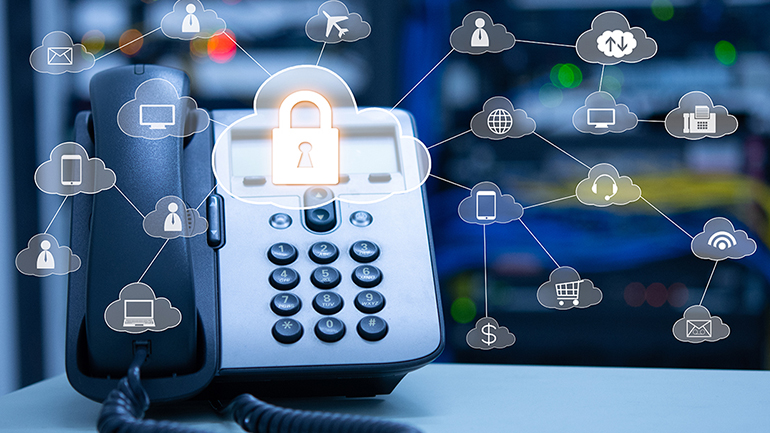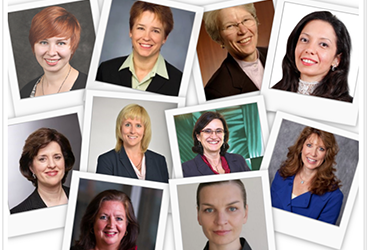The current telecommunications market is abundant with a variety of business phone systems carefully designed to improve day-to-day communications and handle the complex needs of various organizations. Among the different existing types of telephone systems appropriate for use by small-to-medium size businesses, VoIP-related phone solutions are currently the most common and are growing in popularity. VoIP phone systems operate using broadband Internet connections and generally include quick and easy installation, cost effective pricing, high scalability and advanced features with options to cater to any entity size, ranging from a small business to a multi-service enterprise. A comprehensive VoIP solution should include a range of voice functions needed by the organization, and support both external and internal communications as required. Finding the most suitable phone system may be overwhelming, so for those currently on the lookout, here are the top ten VoIP phone systems to investigate. Nextiva VoIP Software…
According to a report by the US-based Pew Research Center, nine out of ten South Koreans own a smartphone, indicating the highest level of smartphone usage in the world. The study revealed that a staggering 95 percent of the population in South Korea has a smartphone, while the remaining 5 percent of the nation uses a mobile phone without access to the Internet. More than 30,133 people in 27 countries took part in the survey conducted last year. It transpired that three out of four adults used smartphones in 18 developed countries. According to the survey, Israel came in second with 88 percent, followed by the Netherlands with 87 percent, and Sweden with 86 percent. Australia, the U.S., Spain, Germany, Britain, France, Italy, Argentina, Japan and Canada followed, with the ownership of smartphones ranging from 81 percent in the U.S. to 66 percent in Canada. Among the advanced…
The networking and telecommunications company Ericsson and Germany’s largest network provider Deutsche Telekom, have announced that together they are the first to successfully demonstrate a wireless transmission on the mmWave spectrum, that can transfer data four times faster than currently existing services. The achievement of the data transmission rate of 40 Gbps with a latency of under 100 microseconds is a considerable advancement towards the fulfilment of stringent latency requirements of 5G, and the anticipated 100 Gbps backhaul networking. Per Narvinger, Head of Product Area Networks, Ericsson, said: “Microwave continues to be a key technology for mobile transport by supporting the capacity and latency requirements of 4G and future 5G networks. Our joint innovation project shows that higher capacity microwave backhaul will be an important enabler of high-quality mobile broadband services when 5G becomes a commercial reality.” A backhaul is an intermediate link between the core network and…
Oculeus, an innovative telecommunications software provider from Germany, has announced the launch of a cloud-based fraud protection service. The new solution, branded with the name Oculeus-Protect, is designed to meet the growing needs for security in the enterprise telecoms industry. The new fraud protection service is supported by the company’s regional cloud environment, and is currently available throughout Europe, and North and South America. The software provider defines the new service as “a real-time telecoms fraud protection service that provides enterprises an intelligent and automated framework to efficiently prevent false charges resulting from unauthorized usage of enterprise telecommunication channels by cybercriminals and other perpetrators of telecom fraud”. They claim that the software is able of block fraudulent telecommunications traffic within milliseconds, and have positioned the service to be totally independent of user’s telecommunications service provider. “There is a clear and definite need for our new telecoms fraud protection service,”…
As a whole, the telecommunications industry has been traditionally male-dominated. However, the trend is rapidly changing as this business sector becomes increasingly augmented with talented women having profound knowledge and skills, and influencing an industry where high-ranking female officials were a rarity until recently. Here is the list of the top ten women in the telecommunications industry, selected for their technical and business know-how, extensive experience, leadership and most significantly, their influence. Michelle Bourque Michelle Bourque is Senior Vice President, Product, Marketing and Access Strategy for BCE Nexxia, a wholly-owned subsidiary of Bell Canada. The company provides wholesale services, including voice, broadband, hosting and co-location, and IP connectivity. As the leader of a team of product and marketing professionals, Michelle has introduced innovation and fresh perspectives to the wholesale marketing and product divisions. According to Michelle, women already have a significant presence in the telecoms sector, and…
Security researchers from Rapid7 have found a large number of insecure UDP Internet services in Germany, which are used for VoIP. The researchers found nearly six million exposed SIP services on port 5060 / UPD, more than any other country in the world. The Session Initiation Protocol (SIP) is used to establish a communication session in Internet telephony and is particularly difficult to secure. Only encrypted SIP (SIP-TLS on port 5061 / TCP) provides adequate protection against active and passive eavesdropping and toll fraud, but plain text SIP is still widely used in Germany. This is demonstrated by Rapid7’s new National Exposure Index, an annual ranking that examines the extent to which countries around the world are at risk of active cyber attacks. For the study, Rapid7s security researchers scoured the entire Internet for TCP / IP services that, for example, are not secured with modern encryption methods or offer…









